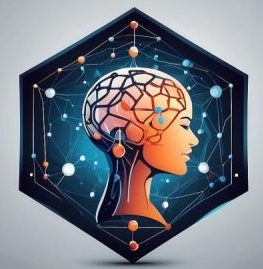Hailuo’s Game-Changer: Unveiling the Revolutionary Image-to-Video AI Feature
In the rapidly evolving world of technology, staying ahead of the curve is pivotal. Enter Hailuo, a leading innovator redefining the digital landscape with its latest breakthrough: a state-of-the-art image-to-video AI generation capability. This remarkable development not only positions Hailuo at the forefront of artificial intelligence advancements but also promises to revolutionize how we conceptualize and engage with digital imagery.
The Significance of Hailuo’s New AI Feature
Hailuo’s ambitious venture into the image-to-video sphere is driven by the rising demand for dynamic, interactive media content. With the ever-growing popularity of platforms like TikTok and Instagram, static images are evolving, giving way to more engaging video formats. Recognizing this shift, Hailuo’s image-to-video AI aims to provide users with the tools to effortlessly convert static images into captivating video narratives, unlocking endless creative possibilities.
This feature differentiates itself from competitors by integrating advanced machine learning algorithms capable of not only animating images but also incorporating realistic transitions and sound. Unlike other technologies, Hailuo’s AI can understand the content, context, and emotion of images, producing video outputs that are not just visually appealing but emotionally resonant.
How the Image-to-Video AI Works
At the core of Hailuo’s cutting-edge feature lies a sophisticated mechanism employing deep learning and neural networks. The AI dissects various elements of an image such as colors, contours, and textures to predict movement patterns. By leveraging a combination of Generative Adversarial Networks (GANs) and powerful image processing techniques, it synthesizes video frames that seamlessly transition between visual points.
What sets Hailuo’s offering apart is its capacity for real-time rendering and adaptive cinematic techniques, enabling users to refine videos on-the-fly and choose from an array of stylistic overlays to personalize their creations. This level of technical innovation not only empowers users but also streamlines creative workflows in various industries, from marketing to filmmaking.
The Impact on the Tech Industry
Hailuo’s image-to-video AI is poised to reshape the technological terrain, setting new standards for media content creation. This tool opens up vast opportunities across multiple sectors, such as advertising, where brands can create compelling narratives with minimal input. The education sector, too, can leverage this technology to produce engaging instructional videos swiftly and efficiently.
As more industries recognize the potential of this innovation, it’s anticipated that we will see widespread adoption, with organizations integrating Hailuo’s AI capabilities into their digital arsenals. Comparatively, while competitors have ventured into image-to-video technology, Hailuo’s sophisticated, user-friendly approach provides a distinct edge, fostering increased market traction and user engagement.
Moreover, Hailuo’s continual dedication to enhancing their AI features ensures sustained relevance and competitiveness, leading to constant evolution alongside the needs of modern digital consumers.
Conclusion
In summary, Hailuo’s groundbreaking image-to-video AI represents a significant stride in both technological innovation and digital content creation. By seamlessly transforming static images into vibrant video content, it not only meets the demands of contemporary media but also enhances the creative potential of countless users across various sectors. As Hailuo solidifies its stronghold in the tech industry, consumers and enterprises alike are encouraged to explore the multifaceted applications of this transformative technology and consider integrating Hailuo’s solutions into their digital transformation strategies.
If you’re eager to harness the power of this unparalleled image-to-video AI feature, now is the time to dive in and experience firsthand the future of visual storytelling.





